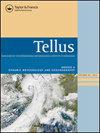观测系统仿真实验的鲁棒性
IF 1.3
4区 地球科学
Tellus Series A-Dynamic Meteorology and Oceanography
Pub Date : 2023-01-01
DOI:10.16993/tellusa.3254
引用次数: 0
摘要
利用观测系统模拟实验(OSSEs)研究了提出的新仪器在数值天气预报(NWP)中的潜在性能。由于OSSE涉及一个完全模拟大气和观测的框架,因此有必要对OSSE进行验证,以确保它足够真实,从而提供有用的实验结果。影响预测技能和观测效果的一个常见问题是,与现实世界中的NWP相比,osse的模型误差往往不足。在这项工作中,比较了美国国家航空航天局全球模拟和同化办公室(NASA/GMAO) NWP OSSE框架的两个版本,由于NWP系统的变化,新框架比旧框架具有更大的模拟预报模型误差。从模拟观测值、分析增量、预测误差和观测影响等方面,对比了同一NWP系统在现实世界中的相应行为,验证了更新后的OSSE的性能。本文还比较了三种新观测系统的OSSE分析和预测影响的结果,以评估OSSE实验的鲁棒性以及模型误差在观测影响中的作用。这三种新仪器分别是地球同步扩展观测(GeoXO)高光谱红外探测器(GXS)、风星座(MISTiC Winds)大气运动矢量的中波红外温度和湿度探测,以及额外的全球导航卫星系统无线电掩星(GNSS-RO)。本文章由计算机程序翻译,如有差异,请以英文原文为准。
Robustness of Observing System Simulation Experiments
Observing System Simulation Experiments (OSSEs) are used to investigate the potential performance of proposed new instruments on numerical weather prediction (NWP). As OSSEs involve a framework in which the atmosphere and observations are all completely simulated, it is necessary to perform validation of the OSSE to ensure that it is sufficiently realistic to provide useful experimental results. A common issue that affects the forecast skill and observation impacts is the tendency of OSSEs to have insufficient model error compared to NWP in the real world. In this work, two versions of the National Aeronautics and Space Administration Global Modeling and Assimilation Office (NASA/GMAO) NWP OSSE framework are compared, with the newer framework having more simulated forecast model error than the older framework due to changes to the NWP system. The performance of the updated OSSE is validated against corresponding behavior of the same NWP system in the real world in terms of the simulated observations, the analysis increments, forecast error, and observation impacts. OSSE results of analysis and forecast impacts for three proposed new observation systems are also compared between the older and newer frameworks to evaluate the robustness of the OSSE experiments and the role of model error in observation impacts. These three new instruments are the Geostationary eXtended Observations (GeoXO) hyperspectral infrared sounder (GXS), the Midwave Infrared Sounding of Temperature and humidity in a Constellation for Winds (MISTiC Winds) atmospheric motion vectors, and additional Global Navigation Satellite System Radio Occultations (GNSS-RO).
求助全文
通过发布文献求助,成功后即可免费获取论文全文。
去求助
来源期刊
CiteScore
4.00
自引率
5.00%
发文量
21
审稿时长
3 months
期刊介绍:
Tellus A: Dynamic Meteorology and Oceanography along with its sister journal Tellus B: Chemical and Physical Meteorology, are the international, peer-reviewed journals of the International Meteorological Institute in Stockholm, an independent non-for-profit body integrated into the Department of Meteorology at the Faculty of Sciences of Stockholm University, Sweden. Aiming to promote the exchange of knowledge about meteorology from across a range of scientific sub-disciplines, the two journals serve an international community of researchers, policy makers, managers, media and the general public.
Original research papers comprise the mainstay of Tellus A. Review articles, brief research notes, and letters to the editor are also welcome. Special issues and conference proceedings are published from time to time.
The scope of Tellus A spans dynamic meteorology, physical oceanography, data assimilation techniques, numerical weather prediction, climate dynamics and climate modelling.

 求助内容:
求助内容: 应助结果提醒方式:
应助结果提醒方式:


